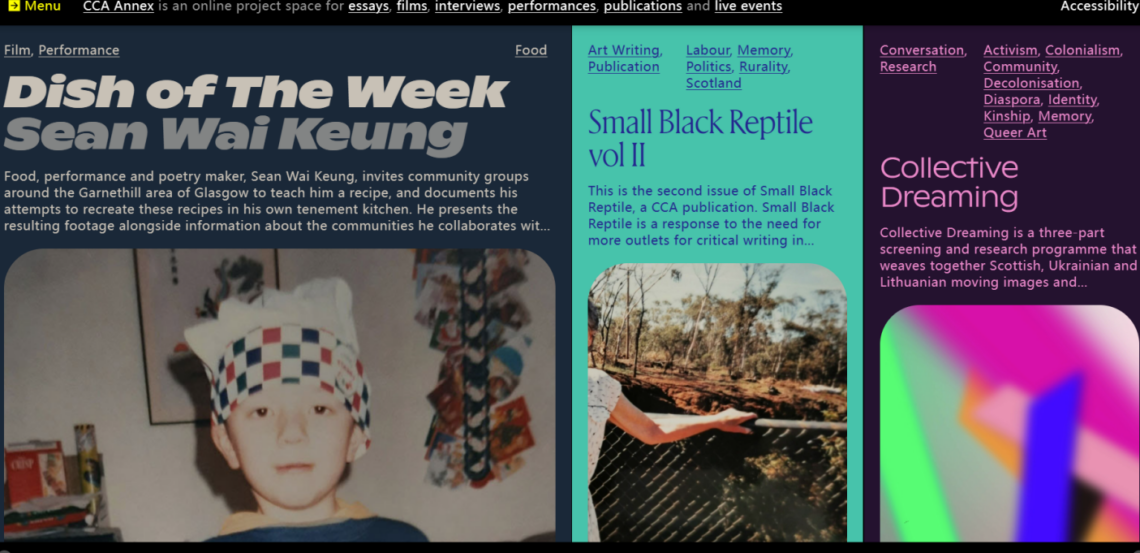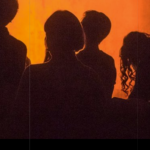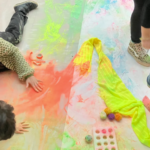About Digital Curation
Alex acquainted us with CCA Annex, an internet-based project area, and the initiatives that are now prepared for launch. An online platform was established to facilitate collaboration between curators, artists, and developers, with the aim of fostering deeper working ties and promoting a more innovative approach. In the field of archiving, Digital Curation is defined by Neil Beagrie as “the management and preservation of digital materials to ensure long-term accessibility” (2001). Digital curation encompasses various online curatorial practices, such as managing a person’s social media presence, organizing a website, curating an exhibition, and curating websites, playlists, online shops, and digital archives” (Li, 2023).
From my perspective, digital curating offers several benefits. Firstly, it is a globalized endeavor, as it enables the content of an exhibition to be distributed worldwide over the internet. This allows viewers to conveniently access the exhibition from any location on the planet. There are no restrictions or constraints on time and space. Users have the ability to visit the website at any time and from any location. Additionally, they have the capability to search and choose based on their individual tastes. Another benefit of digital curation is the ability to provide a wide range of content. Artists showcase the contents of an exhibition in a multimedia format on their website, which offers a wide range of diverse presentations. In addition, digital exhibitions are more cost-effective compared to traditional offline exhibitions. Furthermore, curators are relieved of the concerns regarding venue selection and artwork transportation, resulting in increased efficiency in the preparatory work for curating shows.
Although digital curation offers numerous benefits and conveniences, it also involves certain disadvantages. Websites may impose access limitations, and digital curation typically necessitates viewers to utilize a designated website for accessing the exhibition content. High traffic volumes might impede access speed and negatively impact the audience’s experience. Simultaneously, web platforms designed for digital curation typically necessitate ongoing updates and maintenance, which might demand a substantial commitment of time and resources, as well as the assistance of skilled experts. Unfamiliarity with the webpage’s construction may hinder some viewers’ ability to watch the show. On the other hand, due to the inclusion of multimedia, the interaction between viewers is reduced and the social nature of art is limited.
It is crucial to realize that these limitations are not inherent issues with digital curation itself, but rather potential issues with the technology and methods used in digital curation. As technology advances and enhances, these issues may gradually be resolved.
Reference:
Jones, Maggie (Margaret J.), and Neil. Beagrie. Preservation Management of Digital Materials : A Handbook / by Maggie Jones and Neil Beagrie. London: The British Library for Resource, the Council for Museums, Archives and Libraries, 2001. Print.
Cherry, D. (2008) About Mieke Bal / edited by Deborah Cherry. Art history special issues Malden, Mass. ;: Wiley-Blackwell.
Individual Project Progress
I perfected the relevant artwork choices and scenarios and moved on to the final part of the project. During the week I designed a poster for The Food Funeral and plan to use it in different promotional spaces such as stations, street light adverts etc.
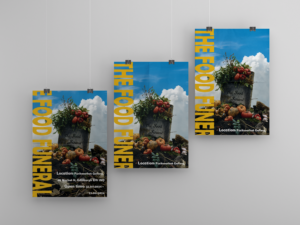
Poster presentation by Simeng (1)

Poster presentation by Simeng (2)
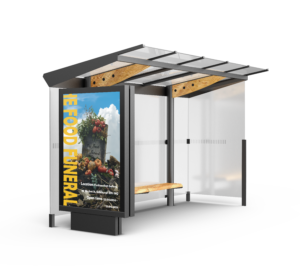

Poster presentation by Simeng (3)
In addition, I am also thinking about the possibility of introducing The Food Funeral to digital curation. Using digital tools and technologies such as data analysis, visualisation and virtual reality, the content of the exhibition can be presented to the audience in a more vivid and interesting way. For example, the severity of food waste can be demonstrated through data visualisation, and the audience can experience the changes brought by environmental protection actions through virtual reality technology.
If possible, souvenir shops could also be linked to the web through digital curation, perhaps attracting more people to buy.
Group Work
The recent group work was a review of the work of our small team of three (me, Jane & Kangming), where I acted as an introducer to the group, refining the presentation of the three of us on the idea of environmental curation and completing the copy. jane provided the three of us with interview questions (interviews of the activities of the three of us in the group), and we chose to answer some of them, which I thought was a very interesting activity.
